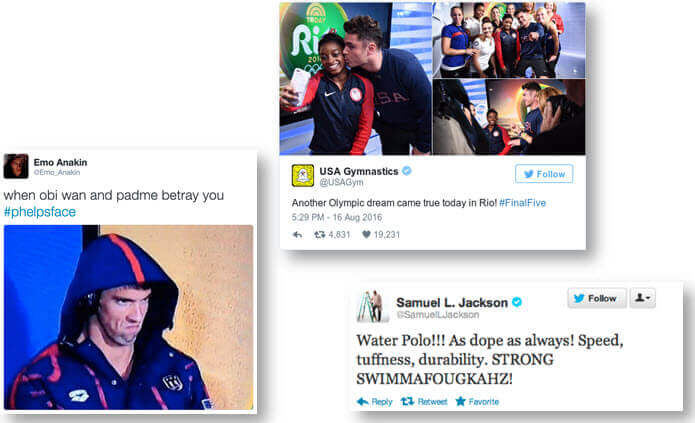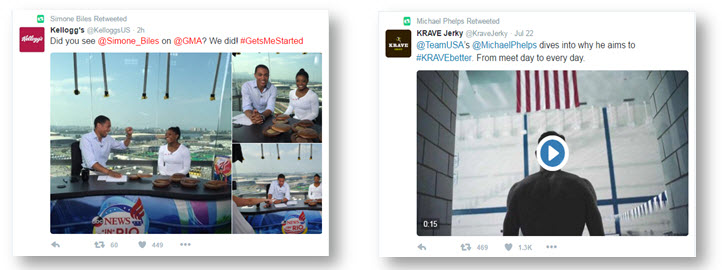
Navigate an unpredictable landscape with actionable, data-driven strategies tailored for your business from the brand down to the local level.
The 2012 Summer Olympics in London, England was the first time we saw a significant shift in the way that viewers engaged with the games, each other, sponsors, content and athletes. Through social media and digital marketing people could interact and stay up to date on their favourite events and athletes. Four years later at Rio 2016 viewers are consuming all the same types of online content but advancements in technology and accessibility has made following the games on a mobile device a seamless and integrated experience. When leveraged correctly this means a world of possibilities for both fans and marketers alike.
Before the games even began, it was estimated that 3.6 billion people across the world would be tuning in and 85 percent would be doing so with a second screen in their hands (whether it be a smart phone or tablet). We may be sitting facing the television that is mounted on the wall, but there is a good chance our eyes are attention is fixated elsewhere. We are checking scores, engaging in friendly banter and expressing our joy (or sadness) after key plays using a variety of available mobile forums.
Viewers are taking to Twitter® to hear the real-time opinions of experts, writers and commentators. Facebook® offers the chance to chat one-on-one with friends, watch highlights and express reactions on their personal network. Olympic stars and attendees are using SnapChat® and Instagram® to offer a more personal view into what is going on behind the scenes in Rio allowing fans unprecedented access into the lives of the athletes they admire most. This level of connectedness gives the ‘Average Joe’ an opportunity to be a part of the games as he watches from his couch in the Midwest.
According to Global Web Index, viewers of the Olympic games use their mobile devices for three specific activities: chatting with friends (46 percent), reading news (40 percent) and using social media (34 percent). We can’t forget that not only will viewers be sharing their opinions and consuming online content using their second screens, but they will also be live streaming the games. In the past, networks pre-recorded highly anticipated events and aired them during prime time. That is no longer a preference due to the increased availability/decreased cost of data as more people want to watch the events as they are happening and now have the means to access them without breaking the bank.

Subscribe to our monthly newsletter.
So, how will “second-screen” viewing change the marketing landscape as the games come to a close? Trends suggest that we are heading towards mobile devices being considered the “first screen” in 2020 (especially as more programming becomes available to live stream). Groups will continue to sit around the television to watch their favorite shows or cheer on their hometown sports teams. But instead of the focus being mostly on the big screen, viewers will be spending more time Googling information, looking up player profiles and scanning social apps.
To be successful, brands must continue to find ways to integrate both offline and online strategies. The message and call to action that is being delivered needs to remain constant, but the way in which it is delivered needs to be adjusted accordingly. Digital strategies allow marketers to increase engagement by capitalizing on emotions and reacting to situations in real time.
Proctor & Gamble ‘s “Thank You Mom” campaign has been a smashing success during these Olympics. The messaging was created and distributed as planned (videos were released on YouTube® 100 days prior to the opening ceremony), but P&G has been able to scale their successful campaign at the games have progressed. As athletes win and claw through the crowds to hug their moms the moment is captured on a smart phone and shared on every social media channel of both the brand and the athlete.

Sponsorships also offer an opportunity to capitalize on the growing trend of influencer marketing. By supporting top athletes brands can gain millions of impressions through association across platforms like Twitter and Instagram. This can increase both brand awareness and loyalty if the athlete has a significant following.

If anything these games have proven that mobile is where brands can win the gold. This trend will only continue to grow as technology improves and social interactions increasingly occur on smart phones and tablets. Television has become more of a traditional medium, which cannot be ignored, but creating a mobile strategy is a definite must as we head into 2017.
Interested in going for gold with your marketing strategies? Contact DAC today to see how we can support your marketing strategies and goals!
Navigate an unpredictable landscape with actionable, data-driven strategies tailored for your business from the brand down to the local level.
Navigate an unpredictable landscape with actionable, data-driven strategies tailored for your business from the brand down to the local level.
Navigate an unpredictable landscape with actionable, data-driven strategies tailored for your business from the brand down to the local level.
Subscribe to our monthly newsletter.